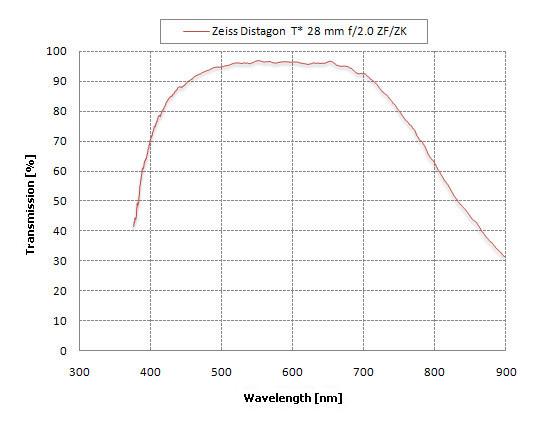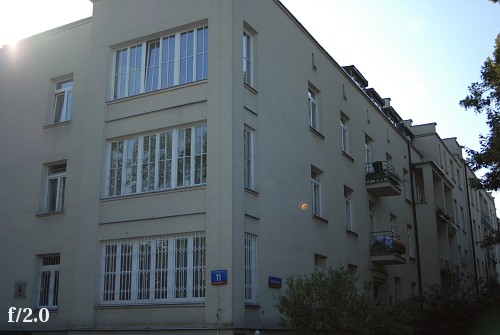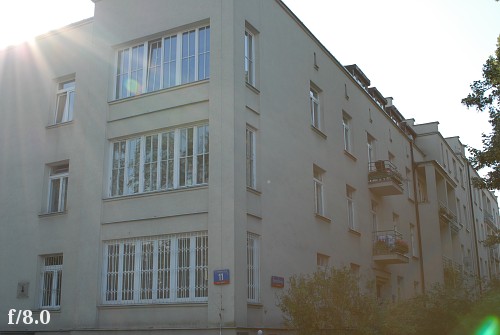Carl Zeiss Distagon T* 28 mm f/2.0 ZF/ZK/ZE
9. Ghosting, flares and transmission
Please Support UsIf you enjoy our reviews and articles, and you want us to continue our work please, support our website by donating through PayPal. The funds are going to be used for paying our editorial team, renting servers, and equipping our testing studio; only that way we will be able to continue providing you interesting content for free. |
- - - - - - - - - - - - - - - - - - - - - - - - - - - - - - - - - - - - - - - - - - - - - - - -
The Zeiss Distagon 2/28 has a little T* sign in its name, which is a well-known sign to every photography enthusiast. It indicates the famous Zeiss multilayer antireflection coating. The designer promises that the coating guarantees only 0.2% of light is reflected through the air-glass border. Having the spectrophotometer in hand we were able to verify how these T* coats perform in practice and confirm the designer’s assurances. The transmission curve of our tested lens can be seen below.
 |
Well…we have to concede to the craftsmanship of Carl Zeiss opticians and engineers. The transmission curve is almost perfect. In green, yellow and red color range yields a flat run on the level of about 96%. Taking into consideration that we are dealing with eight groups of lenses (16 air-glass borders) it means that we lose no more than the promised 0.2% of light on each border. The only small criticism on this otherwise perfect result is the performance in the blue part of the range, where the transmission drops quickly and falls below 80% in violet.
Good coating and a well-designed body are the keys to success when working in bright light. The Zeiss proves this axiom correct. With sun shining basically right into the lens, the Zeiss gives us pictures free from strong artifacts at maximum aperture, as well as at almost closed aperture. Although this situation is very good, it lacks something to prove ideal. Again, a small flaw would be the yellow-orange blink in the middle of the frame that is easily obtained at maximum aperture and which drops down significantly when we stop down the lens. And in that moment there is a green artifact showing up in the corner of the frame.
 |
 |






